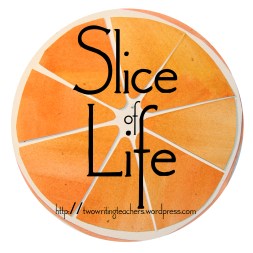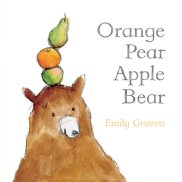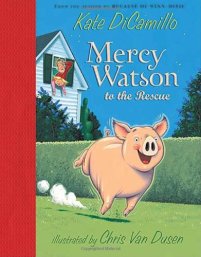Last night’s #readingjoy Twitter chat, led by Jennifer Seravallo, got me thinking about read alouds. Much has been written about the importance of parents reading aloud to children from the very start and making read alouds part of every classroom routine. I agree with every bit of this advice. I read to my own children from the day we came home from the hospital, and we never skipped read aloud time in my classroom. But I’ve also come to realize the importance of read alouds in my intervention lessons.
I left the classroom seven years ago to become our school’s literacy specialist. Because I work in a small district, this role includes many duties. One of these is working with tier 3 students. The children I work with are our youngest, most at-risk students who are typically non-readers when we begin working together. One of the biggest challenges they face is understanding why they should bother with reading at all. Usually this is because reading isn’t a priority at home. I meet with their parents to discuss the importance of reading to and with their children. I also give them pamphlets and links to websites with tips and information about how to make reading part of their routine at home. I send books home that children can keep. And yet, they still don’t read at home.
By the time these children arrive in my room, they’re convinced that I’m going to torture them. So I start by chatting with them about their pets, hobbies, and places they like to visit, just to break the ice. Once they are comfortable, I start asking about favorite books or subjects. Then I bring out my secret weapon. A book. I offer it as something I like, not as something I think they should like. Usually they ask for their own copy by the end of the week.
One of my first students was a first grade boy with a host of issues. (He was diagnosed with Autism during the time I worked with him.) He had no interest in anything other than Legos and hated school because he had to leave his Legos at home. He knew most of the letters and sounds, but didn’t know how to pull them apart or put them together to make words. For some reason, he took a shine to Emily Gravett’s Orange Pear Apple Bear (Simon & Schuster, 2007). I must have read that book to him a hundred times. Soon, he was reading it with me. And before long, he was reading lots of other books, too.
Another boy was adamant that he hated letters and wouldn’t learn to read. I told him that was his choice but that I was going to read to him. His “breakthrough book” was in fact a poem from Jane Yolen and Andrew Fusek Peter’s excellent collection Here’s a Little Poem: A First Book of Poetry (Candlewick, 2007). Peter’s own poem, “The No-No Bird,” introduced this child to a boy who liked the word “no” as much as he did. Maybe it was this flash of recognition that finally brought him around. Or maybe it was simply the fact that he could read the word “no.”
Last year I had a student who was so shy and quiet he barely spoke above a whisper. To break the ice, I began reading Kate DiCamillo’s Mercy Watson to the Rescue (Candlewick, 2005). He loved Mercy and her silly antics! Soon he was reading with me, asking questions, and thinking of further adventures for Mercy. Over the course of the year, we read every Mercy Watson book we could get our hands on. My heart was filled with joy at the look on his face when I presented him with his own copy of Mercy Watson at the end of the school year.
Do I know what it was about each of these books that made them the right books for these children? No. What I do know is that each child heard or saw something in them that made him happy. Something in these books helped him feel connected to another person and let him know he wasn’t alone. And that is, after all, why we read.
Thank you, as always, to Stacey, Tara, Dana, Betsy, Anna, and Beth for hosting Slice of Life each Tuesday. Be sure to visit Two Writing Teachers to read more Slice of Life posts.





I love this post! I’m also a reading specialist and I frequently break away from the structured intervention we’re doing in order to read to the kids! Tapping words and spelling them will never help a child love to read. It’s important we read to them. I also had an intervention student this year whose “book” was the Mercy Watson series! In fact one of my “lost” books was last seen with him. That’s ok, he needed it. Great post!
LikeLike
Love, love this post!! When we rush to “teach” those “at risk” kiddos we might forget to show how we love books and allowing them to join in. I have such a belief in read aloud. Frankly if I could do just one thing with at child, that would be it. What better way to create the love of books. On another note so sad I missed Jennifer Seravallo’s chat. Got to get back on twitter!
LikeLike
I read recently that because of texting children are hearing less and less of the human voice. Kinda reinforces the importance of reading aloud, doesn’t it.
LikeLike
Thank you so much for sharing these wondering stories and experiences.
LikeLike
I love this idea! I taught kindergarten one year (one L O N G year!) and all the students would have been classified as “high needs”. I caught one of them “reading” to herself one day early on. She was holding the book the way I would hold it if I was reading to the entire class. She was craning her neck to see the pictures. I picked her up, put her on my lap and showed her how to hold the book when reading to yourself. She just didn’t know.
LikeLike
The readaloud is so critical – I love the stories you shared to show why it is so.
LikeLike
Bravo! We need more of this opening up books for find more book lovers! One lover to another 🙂
LikeLike
[…] I wrote earlier in the week, I usually have a short read-aloud time during my intervention lessons. About a month ago, I began […]
LikeLike
Great post, check out ‘Again’ or ‘Wolves’ by Emily Gravett also, young reluctant readers love it!
LikeLike